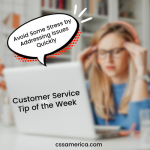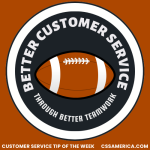
A recent article noted that a European home builder lost millions of dollars in 2016 because their Customer Service Standards declined.
So that begs the question – What are Customer Service Standards?
In short, they are the bare minimum that a customer should expect when interacting with a company. The bare minimum in terms of quality, timeliness, employee knowledge, attitudes, and responsiveness.
We help many organizations develop and implement these standards because they understand it’s a risk to leave customer service up to the individual employee’s expectations of what they should deliver or the individual department’s or business line’s understanding of what is great customer service.
For great customer service to be delivered CONSISTENTLY and in a manner that aligns with organizational values and business goals, it has to be defined. The Standards create clarity for how that definition looks/feels on a daily basis.
But Standards aren’t just for the organization to define in order to set expectations, individual employees should also set high standards of what they expect of themselves.
So what do you expect of yourself? At every “Moment of Truth” with each customer you encounter or co-worker you serve, what experience should you provide? What level of care for others do you expect yourself to convey? What should “respect” look like when you deliver it to others? How do you expect yourself to act with others so that they feel valued and their need seems important?
Companies should set Customer Service Standards to be crystal clear of their expectations and to help create some consistency in the customer service provided throughout their organizations.
Make sure you’re setting standards for yourself, too.
Signup for FREE Tips! Contact Us More Resources for You Visit Our Home Page























